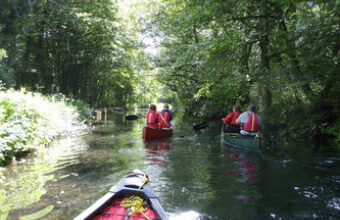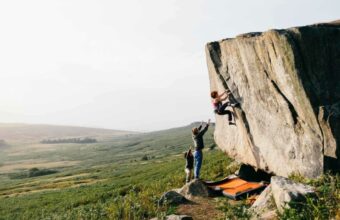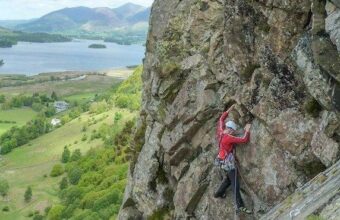Caving & Potholing Courses In The Peak District
The Peak District boasts some incredible caving and potholing opportunities, with tourists and school groups trailing through large caverns daily. The area is littered with caves and old mines ripe for exploring.
Although the terms caving and potholing are often used interchangeably, ‘caving’ refers to navigating primarily horizontal passages while ‘potholing’ focuses on vertical routes, usually requiring more equipment and generally regarded as being more dangerous.
With a wide range of cave systems, the Peak District offers family-friendly and beginner experiences as well as more intermediate opportunities. There are various companies and clubs offering training and experiences across the area which can ensure you have a safe, but exciting adventure.
Courses are led by experienced cavers who will guide you into winding cave systems, crawling through narrow passages, scrambling through underground streams and exploring giant chambers. You’ll see plenty of stalactites, stalagmites and fossils while you learn technical caving skills from your expert guide.
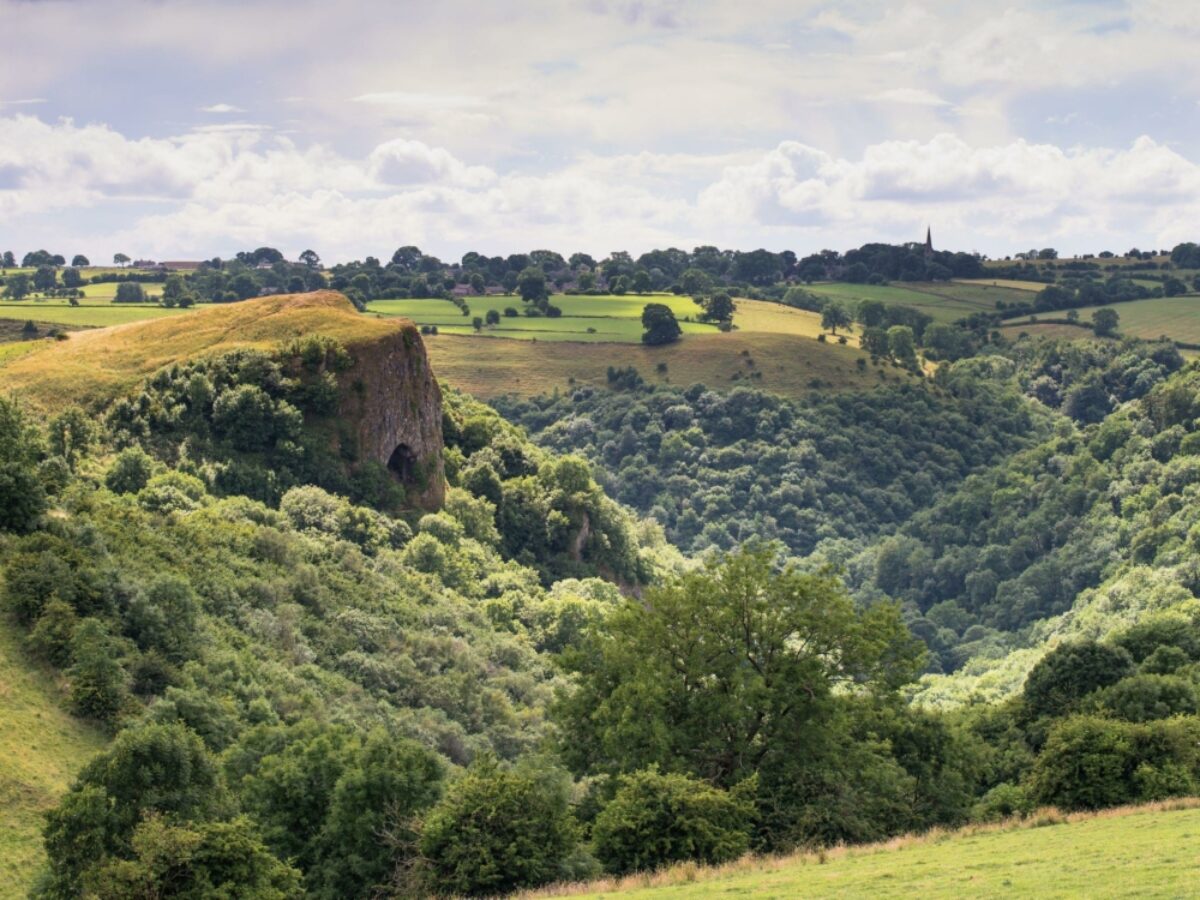
The entrance to Thor's Cave
Showcaves & caverns for the non-caver
While many of the natural cave systems and lead mines in the Peak District require caving experience, there are a number of spectacular showcaves (attractions with an entrance fee) and caverns that are freely accessible to day-trippers.
Castleton
Most of the show caves in the Peak District are centred around Castleton in the High Peak. Peak, Treak Cliff and Blue John all offer the chance to go deep underground with relative ease. Blue John Cavern is the deepest with 245 steps to descend (and reascend) while Peak Cavern, commonly referred to as ‘The Devil’s Arse’ is relatively accessible, although there are a few steps to navigate. Treak Cliff Cavern is probably the most spectacular with its cathedral-like caverns, impressive displays of stalagmites and stalactites as well as its huge column of the rare Blue John mineral. For something a little different, groups can take a boat through Speedwell Cavern, a subterranean lake 450 meters below the surface.
Buxton
Poole’s Cavern is a limestone show cave in Buxton which displays an array of stalagmites and stalactites within a 300 meter chamber lit by atmospheric LED lights. Tours pass through the cavern daily with the main chamber being wheelchair accessible.
Dovedale
Apart from its soaring pinnacles and great limestone crags, Dovedale has a number of accessible caves just off the riverside path for those with some agility. To reach the natural arch of Reynard’s Cave requires a steep hillside scramble. Further north, you will come to Doveholes, shallow twin caverns beside the riverside path. Yet more shallow limestone caves can be found beyond the charming hamlet of Milldale, just south of the Biggins Dale and Wolfscote Dale fork on the River Dove.
Matlock
For something more history based, the combined natural cave systems and lead mines at Heights of Abraham in Matlock Bath are led by expert guides who share information about the caves’ formations and Matlock’s mining past – with the added bonus of a cable car ride thrown in as part of the entrance ticket.
Attached to the Peak District Mining Museum is Temple Mine, a family friendly cave experience where you will learn about life working underground and have the opportunity to pan for gold.
Thor’s Cave on the Manifold Track
Thor’s Cave in Staffordshire is accessible for non-cavers. From Hulme End you can pick up information from the small visitor centre before following the Manifold Way to Wetton Mill, a good fuel stop (there’s more parking here). Another mile on, a steep path heads up to the village of Wetton. A right turn leads to Thor’s Cave (look out for the many brachiopods in the stone steps). To climb into the mouth of the cave requires some agility, but the views across the Manifold Valley are superb.
Caving adventures & courses in the Peak District
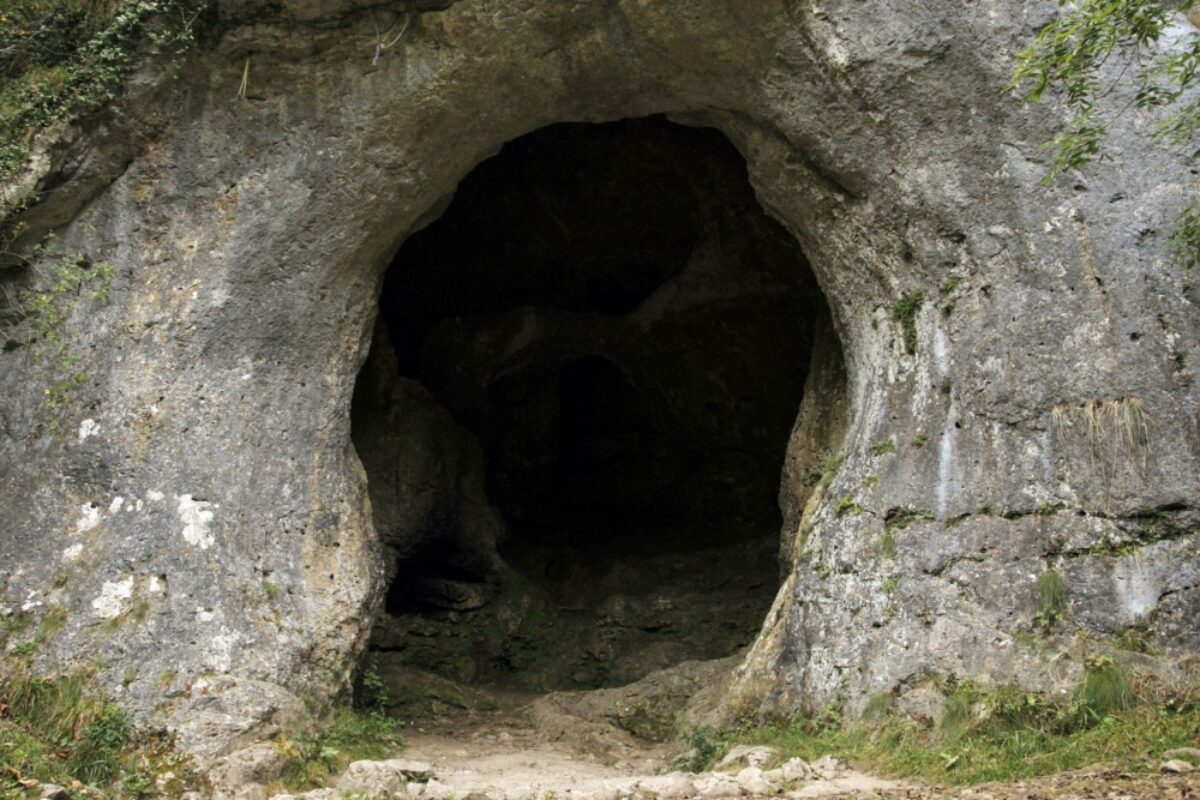
Dove Hole in the Dove Valley
Castleton
From Castleton, you can also access the more challenging James Hill Mine, Maskhill, Oxlow and Titan, which has the deepest single vertical shaft in Britain at 141.5 meters deep.
Matlock
Apart from the Heights of Abraham showcaves at Matlock Bath, many of the old mines are accessible to experienced potholers with permission, but they can be unstable. Grade II caves, Jug Holes Cave, Cumberland Cavern and Wapping Mine as well as the more challenging, grade III, Devonshire Cavern are all accessible from the Matlock area.
Monyash
Monyash hosts a mixture of natural caves and mines including the relatively safe Hillocks and Knotlow Mines as well as Raven Mine and Lathkill Head Cave, the main natural cave in the Monyash area, both of which are visited by local speleological groups.
Stoney Middleton
Stoney Middleton is littered with potholing and caving opportunities, with over 70 entrances in the area.
A notable system is Carlswark Cavern, popular with beginners; it features chambers showcasing large brachiopod fossils as well as streams and pools. In wet weather this system is likely to flood, but there are companies operating tours into the caves.
A number of old mines are accessible including Fingal’s Cave, Merlin and Nickergrove Mine, interconnecting with each other as well as many more. People have gone missing in these systems so be sure to stay within your abilities and explore with at least one experienced caver.
Need to know
Potholing and caving are inherently dangerous sports. Caves are liable to flood and surfaces can be uneven and slippery, not to mention the low light levels and tiring nature of scrambling through tight gaps between rocks.
It is vital you go into it prepared, with at least one experienced caver in your group. There are plenty of professional guides based around the Peak District who will take you down below the surface safely.
If you are planning your own potholing trip, be sure to check whether your chosen location requires permission to access and always let someone know where you will be heading beforehand.

